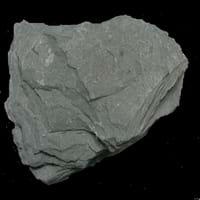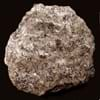Definition
Slate is a fine-grained, foliated, homogeneous metamorphic rock derived from an original shale-type sedimentary rock composed of clay or volcanic ash through low-grade regional metamorphism
Obsidian is a naturally occurring volcanic glass formed as an extrusive igneous rock. It is produced when felsic lava extruded from a volcano cools rapidly with minimum crystal growth
Discoverer
Unknown
Obsius
Etymology
From Old French esclate, from esclat (French éclat)
From Latin obsidianus, misprint of Obsianus (lapis) (stone) of Obsius
Class
Metamorphic Rocks
Igneous Rocks
Sub-Class
Durable Rock, Medium Hardness Rock
Durable Rock, Medium Hardness Rock
Group
Not Applicable
Volcanic
Other Categories
Fine Grained Rock, Opaque Rock
Opaque Rock
Color
Black, Brown, Buff, Green, Light to Dark Grey, Purple, Red, Shades of Blue
Black, Blue, Brown, Green, Orange, Red, Tan, Yellow
Durability
Durable
Durable
Scratch Resistant
Yes
Yes
Interior Uses
Bathrooms, Decorative Aggregates, Entryways, Floor Tiles, Flooring, Homes, Hotels, Interior Decoration, Kitchens, Stair Treads
Decorative Aggregates, Interior Decoration
Exterior Uses
As Building Stone, As Facing Stone, Garden Decoration, Paving Stone
Garden Decoration
Other Architectural Uses
Curbing
Not Yet Used
Construction Industry
As Dimension Stone
Arrowheads, Cutting Tool, Knives, Scrapers, Spear Points
Medical Industry
Not Yet Used
Surgery
Antiquity Uses
Artifacts, Monuments, Sculpture, Small Figurines
Artifacts, Jewellery
Commercial Uses
Blackboards, Commemorative Tablets, Laboratory bench tops, Standard material for the bed of Billiard table, Standard material for the beds of Pool and Snooker table, Tombstones, Used in aquariums, Writing Slates
Creating Artwork, Mirror, Used in aquariums
Types
Not Available
Fireworks Obsidian, Mahogany, Sheen Obsidian, Snowflake obsidian and Velvet Peacock Obsidian
Features
Easily splits into thin plates, Surfaces are often shiny, Very fine grained rock
Blocks negativity, Helps to protect against depression
Archaeological Significance
Monuments
Used
Not Yet Used
Famous Monuments
Data Not Available
Not Applicable
Sculpture
Used
Not Yet Used
Famous Sculptures
Data Not Available
Not Applicable
Figurines
Used
Not Yet Used
Formation
Slate is a low grade metamorphic rock that is generally formed by metamorphosis of mudstone or shale, under relatively low pressure and temperature conditions.
When the lava is released from volcano, it undergoes a very rapid cooling which freezes the mechanisms of crystallization. The result is a volcanic glass with a uniform smooth texture.
Mineral Content
Apatite, Biotite, Chlorite, Feldspar, Graphite, Hematite, Kaolinite, Magnetite, Pyrite, Tourmaline, Zircon
Not Available
Compound Content
Aluminium Oxide, CaO, Iron(III) Oxide, Potassium Oxide, MgO, Sodium Oxide, Silicon Dioxide, Titanium Dioxide
Aluminium Oxide, CaO, Iron(III) Oxide, FeO, Potassium Oxide, MgO, MnO, Sodium Oxide, Phosphorus Pentoxide, Silicon Dioxide, Titanium Dioxide
Types of Metamorphism
Burial Metamorphism, Cataclastic Metamorphism, Regional Metamorphism
Burial Metamorphism, Cataclastic Metamorphism, Contact Metamorphism
Types of Weathering
Biological Weathering, Chemical Weathering, Mechanical Weathering
Biological Weathering, Chemical Weathering, Mechanical Weathering
Types of Erosion
Coastal Erosion, Glacier Erosion, Water Erosion, Wind Erosion
Chemical Erosion, Coastal Erosion, Glacier Erosion
Grain Size
Very fine-grained
Not Applicable
Fracture
Splintery
Conchoidal
Streak
Light to dark brown
White
Porosity
Less Porous
Very Less Porous
Cleavage
Slaty
Non-Existent
Toughness
1.2
Not Available
Specific Gravity
2.65-2.8
2.6-2.7
Transparency
Opaque
Translucent
Density
2.6-2.8 g/cm3
2.6 g/cm3
Resistance
Heat Resistant, Impact Resistant, Pressure Resistant, Wear Resistant
Heat Resistant, Impact Resistant
Deposits in Eastern Continents
Asia
China, India, Turkey
Afghanistan, Indonesia, Japan, Russia
Africa
Not Yet Found
Kenya
Europe
Belgium, France, Germany, Italy, Norway, Portugal, Spain, United Kingdom
Greece, Hungary, Iceland, Italy, Turkey
Others
Arctic
Not Yet Found
Deposits in Western Continents
North America
USA
Canada, Mexico, USA
South America
Brazil
Argentina, Chile, Ecuador, Peru
Deposits in Oceania Continent
Australia
Not Yet Found
New Zealand
All about Slate and Obsidian Properties
Know all about Slate and Obsidian properties here. All properties of rocks are important as they define the type of rock and its application. Slate belongs to Metamorphic Rocks while Obsidian belongs to Igneous Rocks.Texture of Slate is Foliated whereas that of Obsidian is Glassy. Slate appears Dull and Obsidian appears Shiny. The luster of Slate is dull while that of Obsidian is vitreous. Slate is available in black, brown, buff, green, light to dark grey, purple, red, shades of blue colors whereas Obsidian is available in black, blue, brown, green, orange, red, tan, yellow colors. The commercial uses of Slate are blackboards, commemorative tablets, laboratory bench tops, standard material for the bed of billiard table, standard material for the beds of pool and snooker table, tombstones, used in aquariums, writing slates and that of Obsidian are creating artwork, mirror, used in aquariums.










